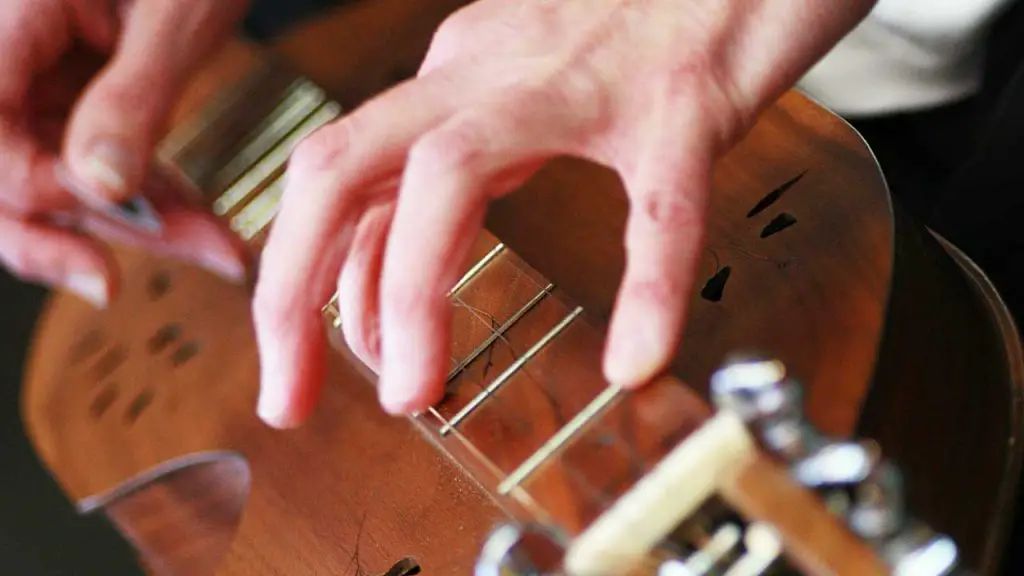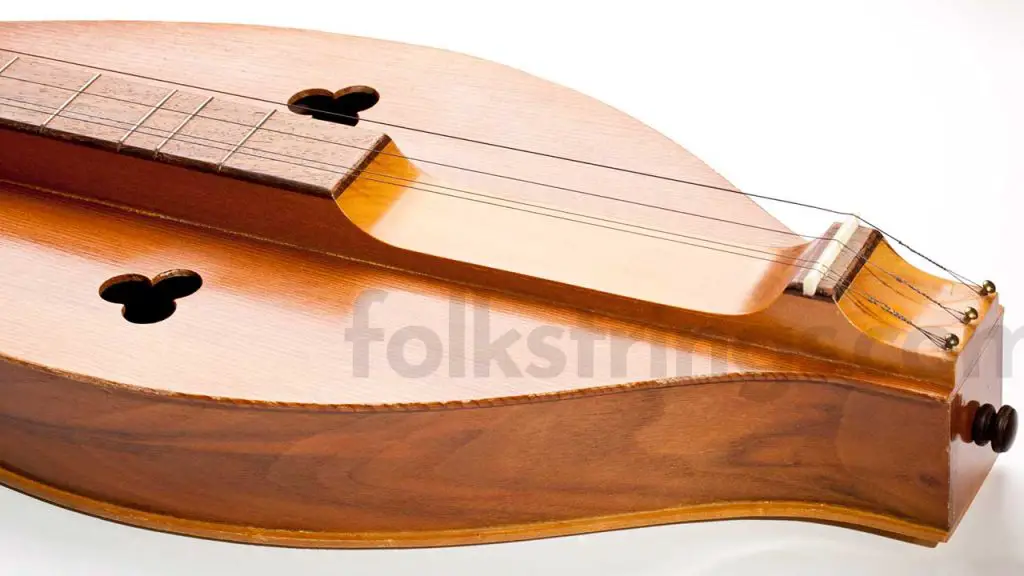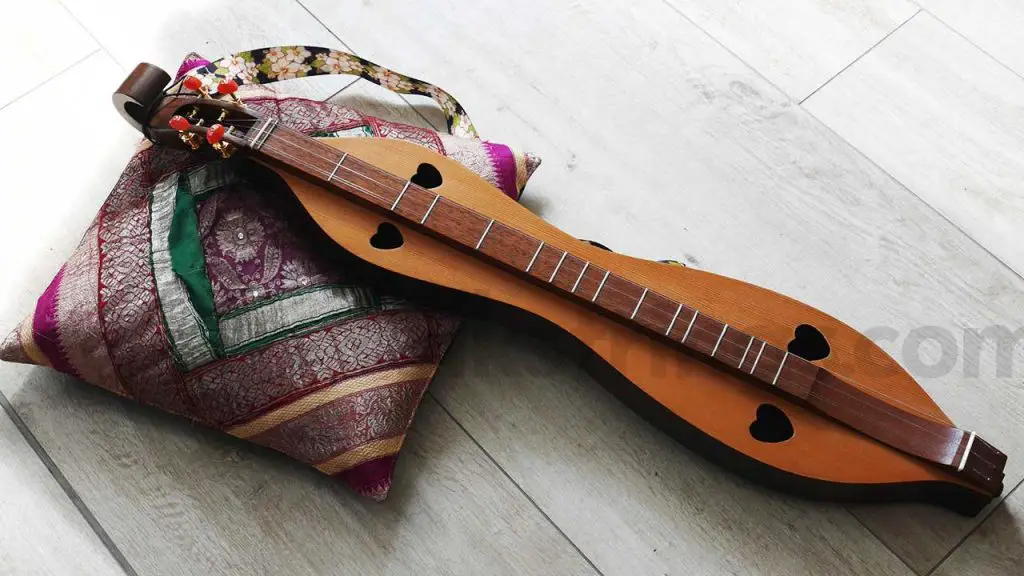Folkstrings.com is reader-supported. When you buy through links on our site, we may earn a small commission.
If you’re looking for a unique and interesting instrument to add to your repertoire, the dulcimer might be just what you’re looking for. This musical instrument has a long and varied history, and there’s a lot to learn about it.
In this blog post, we will take a closer look at the dulcimer and explore everything you need to know about it. So whether you are a beginner or an experienced player, read on for all the information you need to get started with the dulcimer!
Table of Contents
- Is a Dulcimer Hard to Learn to Play?
- Is Dulcimer Easier Than Guitar?
- Can You Use a Guitar Capo on a Dulcimer?
- How Is a Dulcimer Tuned?
- Can You Play a Dulcimer with a Bow?
- Conclusion
Is a Dulcimer Hard to Learn to Play?

A dulcimer is a great beginner instrument because it requires only three or four strings. It is relatively easy to learn to play, and even a beginner can sound good on this instrument with a little practice.
The dulcimer is played by strumming or striking the strings with hammers, and there are only a limited number of chords that need to be learned in order to play most songs.
In addition, the dulcimer is very portable, making it an ideal choice for those who want to take their music on the go. With its unique sound and ease of play, the dulcimer is an instrument that is well worth learning.
The best way to learn to play a dulcimer is to just get started. There are many ways to learn how to play it. One way is to of course take face to face lessons by finding a teacher who is local to you. This is an excellent option. You can find dulcimer teachers in your local area by doing a simple Google search.
Another way to learn to play the dulcimer is to start playing on your own. Pick a song that you like, and play it over and over until you can play it. You will of course need to find a good dulcimer book to help guide you at points where you will inevitably get stuck.
It’s important to practice regularly. When you first start playing, you may find it challenging to play the dulcimer well and you will get frustrated, so you may need to practice several times a day to keep improving.
Playing the dulcimer is an enjoyable and rewarding experience. You’ll have a lot of fun as you progress and become more familiar with the instrument.
Is Dulcimer Easier Than Guitar?

It is often considered to be easier to learn and play than a guitar. Dulcimers typically have fewer strings than guitars, and the strings are often arranged in a repeating pattern, which can make them easier to learn.
In addition, dulcimers tend to be smaller and lighter than guitars, which can make them more comfortable to hold and play.
However, guitars can offer a wider range of sounds and styles, and they are often more versatile than dulcimers. As a result, the decision of which instrument to learn depends on the individual’s musical goals and preferences.
Can You Use a Guitar Capo on a Dulcimer?
A capo is a small device that is attached to the neck of a guitar or other stringed instrument, in order to raise the pitch of all the strings by the same amount. This can be useful when you want to play along with another musician in a different key, or if you simply want to change the key of a song without re-tuning your instrument.
However, a capo is not typically used on a dulcimer. This is because the dulcimer has a different number of strings than guitars, and the strings are tuned to a different pitch. As a result, using a guitar capo on a dulcimer may cause the strings to sound out of tune.
In addition, the neck of a dulcimer is often wider and thicker than the neck of a guitar, making it difficult to position the capo in the right spot. For these reasons, it’s best to stick with using a dulcimer-specific capo.
How Is a Dulcimer Tuned?
The dulcimer is typically tuned to one of two different methods, Ionian (DAA) or Mixolydian (DAD). To tune to DAA, the bass string is tuned to D, the middle string is tuned to A, and the melody strings are tuned to A.
To tune to DAD, the bass string is tuned to D, the middle string is tuned to A, and the melody strings are tuned down to D.
The dulcimer can also be re-tuned to other chords, but DAA and DAD are the most common. To re-tune, first determine which chord you want to tune to. Then, using a tuning fork or another reference note, tune the corresponding strings to the correct pitch.
For example, if you’re re-tuning to DAD from DAA, you would tune the drone string down from A to D. Once all of the strings are in tune, you can begin playing.
As previously mentioned, we recommend this book as a reliable guide for tuning the dulcimer.
Can You Play a Dulcimer with a Bow?
The dulcimer is a stringed instrument that is traditionally played by strumming, or with two hammers.
However, it is also possible to play the dulcimer with a bow. This technique is often used in folk music, and it can produce a beautiful, ethereal sound.
Playing the dulcimer with a bow requires a different approach than playing with hammers. First, the player must make sure that the bow hair is correctly positioned on the string.
Once the bow hair is in place, the player can then start to draw the bow across the string. The speed and pressure of the bow will determine the pitch of the note.
For beginners, it may be helpful to practice playing scales or simple melodies before trying more complex pieces. It takes time and patience to master, but it’s a great way to add new dimensions to your playing.
Conclusion
The dulcimer is an underrated instrument that more people should give a try. It is versatile and can be played in a bunch of different styles.
It is perfect for anyone who wants to learn a new skill, and a great way to improve your musicality. Pick up a dulcimer today and start making beautiful music!
Author Profile
-
Daniel Johnstone is an English writer with a love for stringed instruments from around the world.
He shares his love for these instruments through his writing for folkstrings.com, a website dedicated to all things related to folk string music.
Daniel's passion for music started at a young age, and he has since become an accomplished musician, playing guitar, cavaco, and recently, the harp.
His dedication to learning and sharing his knowledge of stringed instruments is evident in his insightful and engaging blog posts. Whether you're a seasoned musician or a beginner, Daniel's writing is sure to inspire and entertain you.
When he's not playing music or writing, you can find Daniel exploring new instruments and seeking out new sounds to share with his readers.
Latest entries
 AutoharpApril 4, 2024Is Autoharp Easy to Play? Unveiling the Truth for Beginners
AutoharpApril 4, 2024Is Autoharp Easy to Play? Unveiling the Truth for Beginners AutoharpApril 4, 2024What Is an Autoharp Worth? Your Guide to Pricing and Value
AutoharpApril 4, 2024What Is an Autoharp Worth? Your Guide to Pricing and Value AutoharpApril 4, 2024Where Is the Best Place to Buy an Autoharp? Your Top Picks Reviewed
AutoharpApril 4, 2024Where Is the Best Place to Buy an Autoharp? Your Top Picks Reviewed AutoharpApril 4, 2024How Does the Autoharp Work? – Unveiling Its Melodic Secrets
AutoharpApril 4, 2024How Does the Autoharp Work? – Unveiling Its Melodic Secrets

